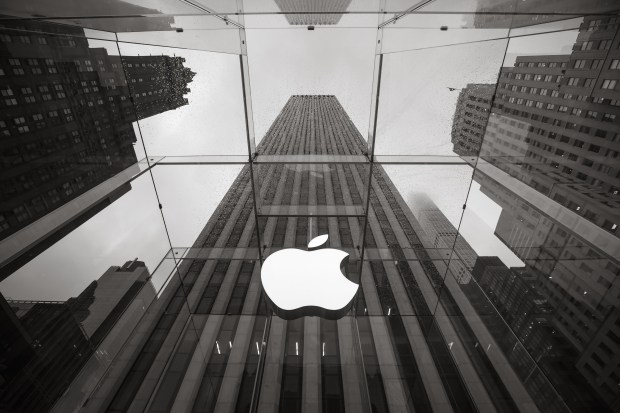Apple Shares Fall After TSMC Prediction

Apple and its suppliers saw their share prices fall on Thursday (April 19) after a prediction of softer smartphone sales from Taiwan Semiconductor Manufacturing Co. (TSMC).
According to news from Reuters, due to concerns about the demand for iPhones, TSMC revised its full-year revenue target.
TSMC, the world’s largest contract chipmaker and a major Apple supplier, said it expects 2018 growth of 5 percent for the global semiconductor industry, lowering its prediction from an earlier forecast of 5–7 percent.
“Apple represents nearly 20 percent of TSMC’s revenue, so the outlook potentially points to weaker-than-anticipated iPhone demand,” said Atlantic Equities Analyst James Cordwell.
In addition, Mizuho Securities USA said in a client note that its data also points to soft demand for the iPhone X, as well as a steady fall in iPhone 8 and 8 Plus orders.
Apple’s shares were last down 2.5 percent on Thursday, while shares of the company’s suppliers, including Qualcomm, Intel, Qorvo, Skyworks Solutions and Broadcom fell by 2 percent to 5 percent.
“Until the new iPhones in the fall start driving the production food chain in Q3, mobile’s going to be weak,” Elazar Advisors Analyst Chaim Siegel said.
Early last month, JPMorgan slashed its production estimates on the iPhone X for the first and second quarters and also lowered estimates for units shipped in the second quarter.
The change comes as Apple is struggling with the iPhone X in China — a huge market for the company and one in which it has underperformed. Shoppers in Asia, including in India and Indonesia, are choosing Chinese smartphones from the likes of Xiaomi, OPPO and Vivo over the iPhone X.
TSMC also estimated 8 percent growth for contract chipmakers, down from its previous prediction of 9–10 percent.
That sent shares of TSMC down 6 percent, while chip equipment makers Applied Materials and Lam Research fell about 5 percent. ASML Holding lost 3.6 percent.
Lam Research announced this week that its shipments missed consensus estimates for the first time in five years.
